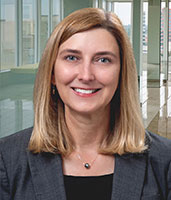Consider modifying arbitration clauses to avoid rising litigation after Supreme Court ruling.
By John Amabile, Debbie Edney, and Jonathan Crotty
Manufacturers and other companies involved in interstate commerce should consider adjusting their arbitration agreements to sidestep litigation that will likely flow from a recent U.S. Supreme Court ruling.
That is one of the primary takeaways from the Supreme Court’s recent ruling in the Bissonnette v. LePage Bakeries Park St. case. As we wrote in our analysis of the case’s Supreme Court arguments, at issue was the “residual” exemption to the Federal Arbitration Act (FAA) that allows employees who qualify as “any other class of workers engaged in foreign or interstate commerce” to avoid arbitration — even if they had signed an arbitration clause.
Plaintiffs’ attorneys have been filing a variety of lawsuits attempting to stretch which workers count as engaged in interstate commerce. The broader the exemption, the more workers who can avoid arbitration and proceed with lawsuits, including class actions. The U.S. Chamber of Commerce and others in the business community have taken a keen interest in these cases. Companies typically prefer to handle employment disputes in arbitration because it can be faster and cheaper.
The Supreme Court’s ruling in Bissonnette provides a measure of clarity on the exemption. But it also virtually guarantees businesses will face more litigation on the issue.
“The only question before us is whether a transportation worker must work for a company in the transportation industry to be exempt under… the FAA,” Chief Justice John Roberts wrote for a unanimous Supreme Court in Bissonnette. “We conclude that there is no such requirement.”
The ruling closes off an industry-focused path to exclude workers from the exemption, which the justices were concerned would breed more litigation. “Mini-trials on the transportation-industry issue could become a regular, slow, and expensive practice in FAA cases,” Roberts wrote.
The court did not, however, address whether the plaintiffs at the heart of the Bissonnette case otherwise fit into the exemption. Roberts wrote in a footnote, “The Second Circuit did not address whether Bissonnette and Wojnarowski qualify as transportation workers based on the work that they perform, or whether they are ‘engaged in… interstate commerce’ even though they do not drive across state lines. We do not decide those issues.”
The justices remanded the case to the lower court for further proceedings. They drew from two prior rulings (commonly called Saxon and Circuit City) and layered quotes from both in providing this guidance:
As we held in Saxon, a transportation worker is one who is “actively” “‘engaged in transportation’ of… goods across borders via the channels of foreign or interstate commerce.” In other words, any exempt worker “must at least play a direct and ‘necessary role in the free flow of goods’ across borders.”
Litigation on this issue will now focus on how direct and necessary any given worker’s role is in the free flow of goods across borders. Do drivers who deliver products the “last mile” count if those products were made in another state? How about homebuilders who source nails from South Carolina, wood from North Carolina, and drywall from Texas?
On the one hand, courts could decide to set the line based in part on whether the worker is crossing state lines, which would help prevent the exemption from swallowing the rule. But on the other hand, the Supreme Court seemed to dismiss that line in its earlier Saxon ruling, which involved a ramp supervisor who loaded cargo on and off airplanes.
“The airline argues that only workers who physically move goods or people across foreign or international boundaries—pilots, ship crews, locomotive engineers, and the like—are ‘engaged in foreign or interstate commerce,'” Justice Clarence Thomas wrote for the court in Saxon. “So construed, [the FAA] does not exempt cargo loaders because they do not physically accompany freight across state or international boundaries.” The court went on to say “none” of the arguments supporting that reading “persuades us.”
The bottom line is that the litigation from here will (at least at first) come down to the specific facts of the individual worker. Businesses should pay particular attention to how courts in the jurisdictions in which they operate address these issues, as those initial precedents may conflict, depending on each court’s reading of the decision.
Companies could consider grounding their employment-related arbitration agreements in state law rather than the FAA. The Carolinas and Georgia, for example, do not have an interstate commerce exemption in their arbitration laws, so companies could sidestep this issue by having their employment arbitration obligations enforced under one of those states’ laws.
Companies could also consider adjusting the language in their arbitration agreements that deals with who has the authority to make the decision to arbitrate — a judge or an arbitrator. (This is another issue the Supreme Court will weigh into this year in a case called Coinbase, Inc. v. Suski.) Courts have traditionally enforced contract language that specifies the arbitrator gets to make the call. While certainly not a guarantee, it seems more likely that an arbitrator will require arbitration than a judge, given the predisposition in favor of arbitration.
The Bissonnette case will not be the last word on the interstate commerce exemption. Plaintiffs’ attorneys will undoubtedly go looking for employees and independent contractors to test whether their job duties count as “a direct and ‘necessary role in the free flow of goods’ across borders.”
Businesses should be prepared to face more employment litigation until the courts or Congress provide additional clarity. In the meantime, they should consider modifying their arbitration agreements to attempt to shelter themselves from the issue.
John Amabile, Debbie Edney, and Jonathan Crotty are attorneys at Parker Poe in Atlanta, Georgia; Washington, DC; and Charlotte, North Carolina.



In this episode, I sat down with Beejan Giga, Director | Partner and Caleb Emerson, Senior Results Manager at Carpedia International. We discussed the insights behind their recent Industry Today article, “Thinking Three Moves Ahead” and together we explored how manufacturers can plan more strategically, align with their suppliers, and build the operational discipline needed to support intentional, sustainable growth. It was a conversation packed with practical perspectives on navigating a fast-changing industry landscape.